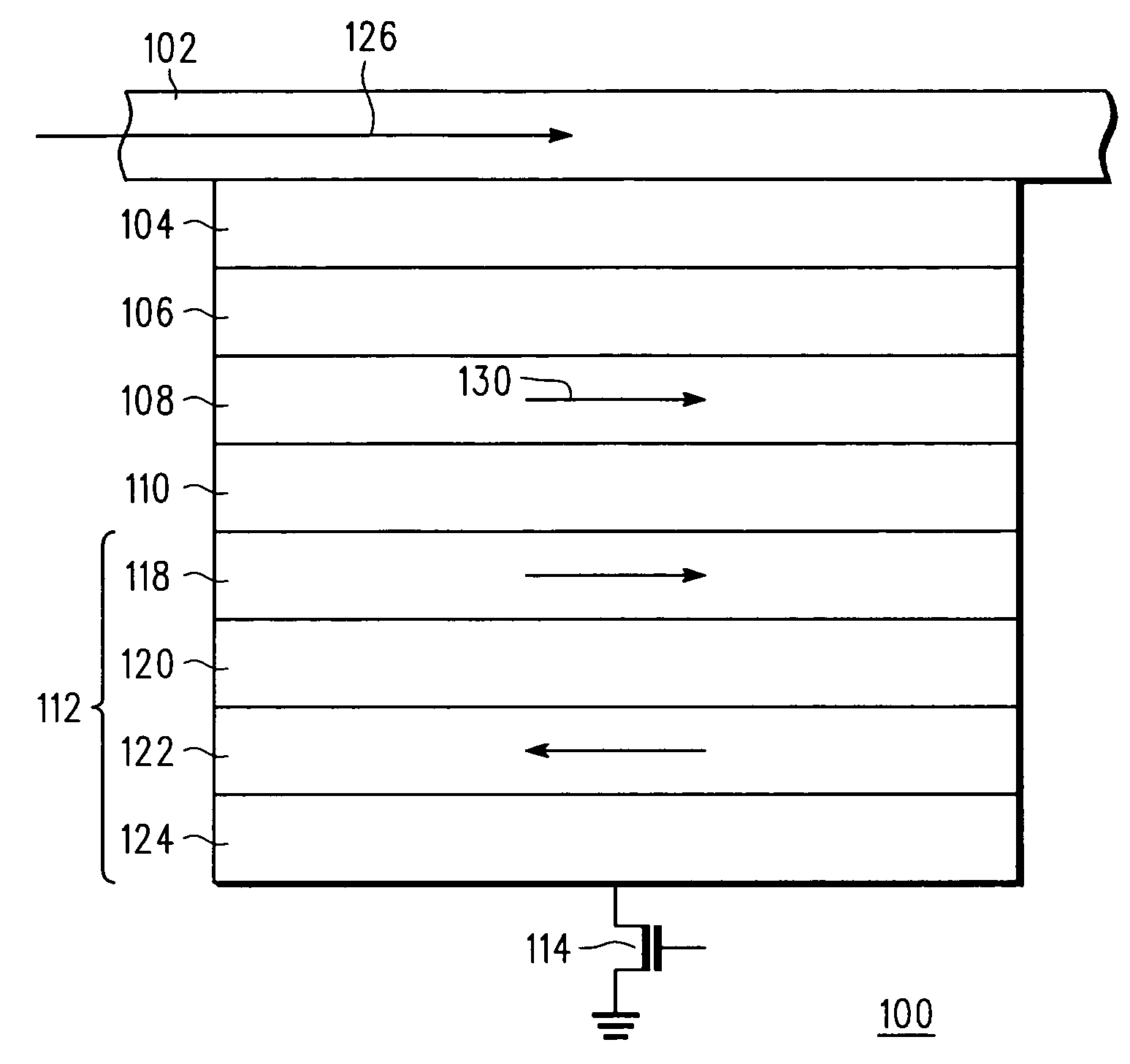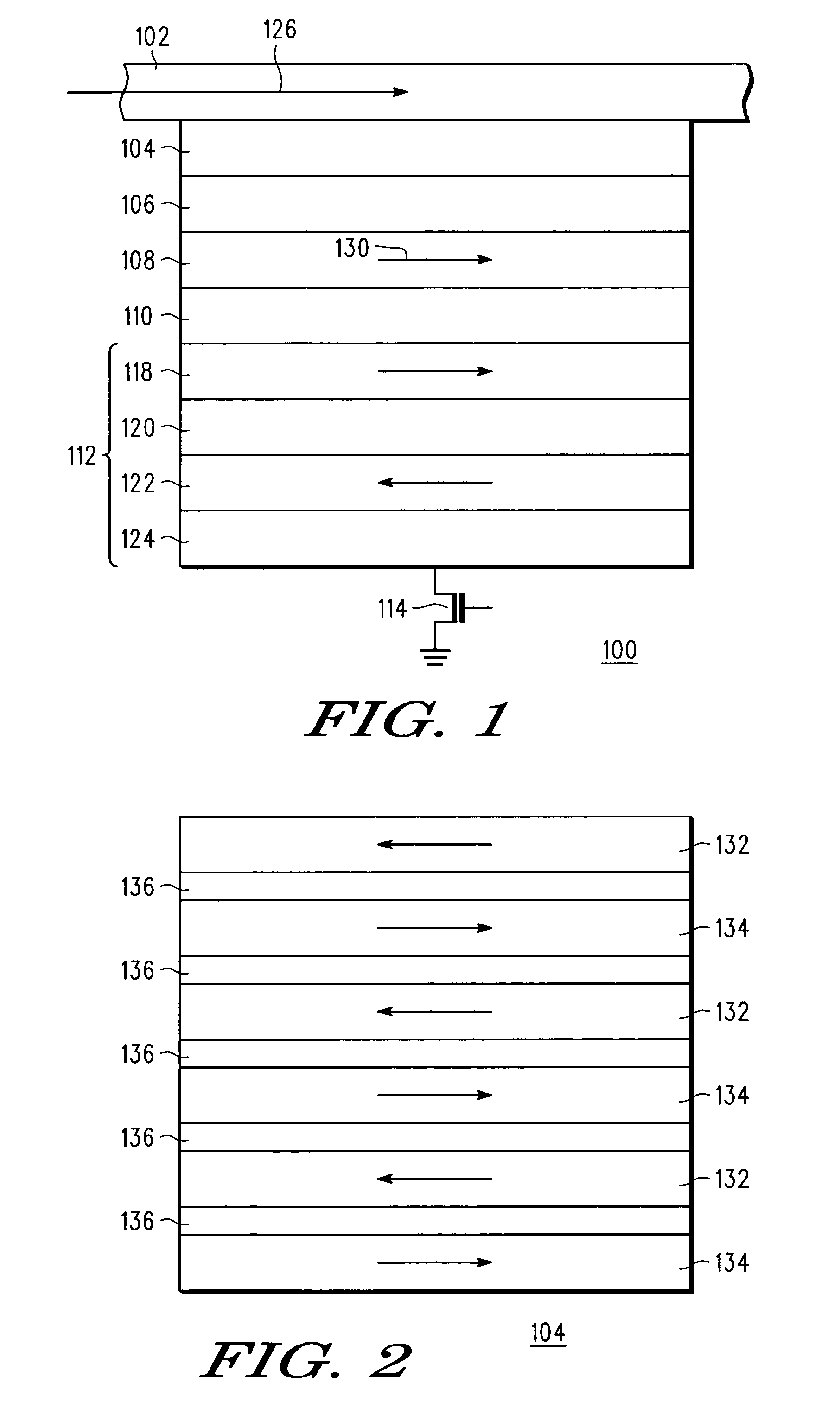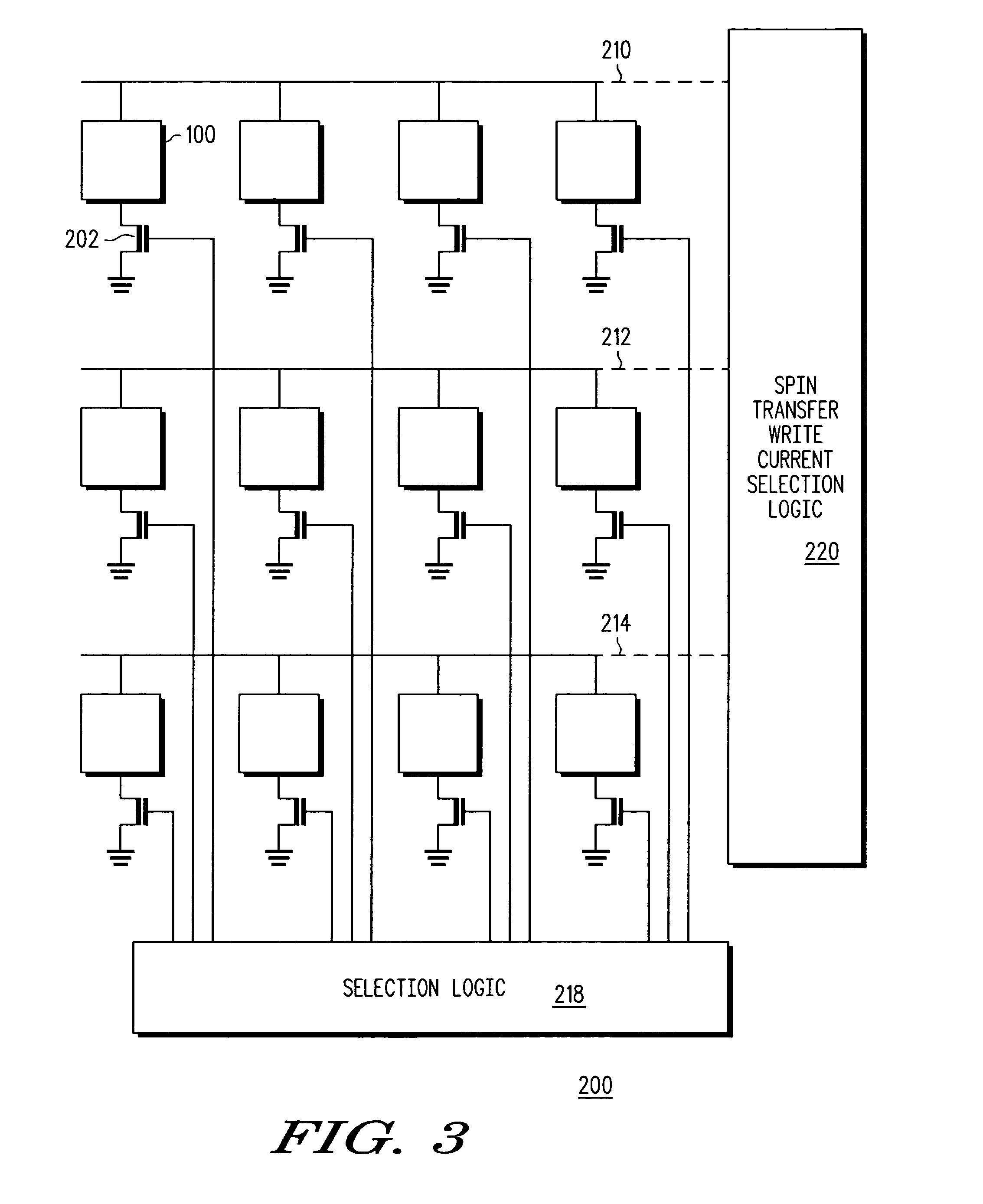Spin-transfer based MRAM with reduced critical current density
a technology of critical current density and mram, applied in the field of spin-transfer-based mram devices, can solve the problems of unintentional alteration of neighboring cells, affecting the stability of neighboring cells,
- Summary
- Abstract
- Description
- Claims
- Application Information
AI Technical Summary
Benefits of technology
Problems solved by technology
Method used
Image
Examples
Embodiment Construction
[0017]The following detailed description of the invention is merely exemplary in nature and is not intended to limit the invention or the application and uses of the invention. Furthermore, there is no intention to be bound by any theory presented in the preceding background of the invention or the following detailed description of the invention.
[0018]The spin-transfer effect is known to those skilled in the art. Briefly, a current becomes spin-polarized after the electrons pass through the first magnetic layer in a magnet / non-magnet / magnet trilayer structure, where the first magnetic layer is substantially thicker than the second magnetic layer. The spin-polarized electrons cross the nonmagnetic spacer and then, through conservation of angular momentum, place a torque on the second magnetic layer, which switches the magnetic orientation of the second layer to be parallel to the magnetic orientation of the first layer. If a current of the opposite polarity is applied, the electrons ...
PUM
 Login to View More
Login to View More Abstract
Description
Claims
Application Information
 Login to View More
Login to View More - R&D
- Intellectual Property
- Life Sciences
- Materials
- Tech Scout
- Unparalleled Data Quality
- Higher Quality Content
- 60% Fewer Hallucinations
Browse by: Latest US Patents, China's latest patents, Technical Efficacy Thesaurus, Application Domain, Technology Topic, Popular Technical Reports.
© 2025 PatSnap. All rights reserved.Legal|Privacy policy|Modern Slavery Act Transparency Statement|Sitemap|About US| Contact US: help@patsnap.com



